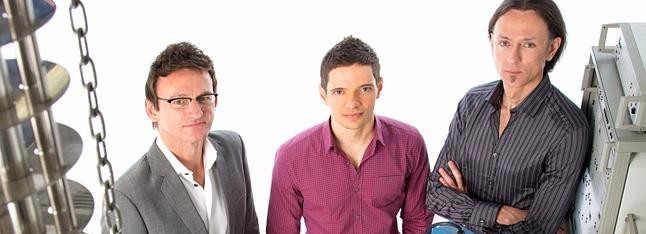In a breakthrough towards eventual commercialisation of quantum computing with its very fast speeds, a University of NSW team has opened the way to greater computer miniaturisation by storing and retrieving information from a device based on a single atom.
Nano-electronics professor Andrew Dzurak, researcher Andrea Morello and PhD student Jarryd Pla said on Thursday they had written and retrieved information by manipulating the magnetic orientation, or spin, of an electron in a phosphorous atom embedded in a silicon chip.
“This quantum bit, or qubit, is the basic unit of data for a quantum computer,” Professor Dzurak said on Thursday. “This really is the key advance towards realising a silicon quantum computer based on single atoms.”
Today’s digital computers are based on molecules, made up of atoms, and moving to the next stage of miniaturisation could see the development of a new type of computer within a decade.
While molecular computers represent data as either a 1 or a zero, electron spin can be manipulated in more complex ways, multiplying the computing potential of a quantum computer.
Dr Morello said Thursday’s news, announced in the journal Nature, was the quantum equivalent of building the first transistor. “It is not a computer yet,” he said. “But it is the landmark that allows you to confidently think you will one day build a computer with it.”
Professor Dzurak said the next step was to combine pairs of quantum bits into a “logic gate” which would be the basic processing unit of a quantum computer.
“The control of enormous collections of spins using electromagnetic fields is at the heart of magnetic resonance imaging used, for example, in brain scans,” he said. “Here we are using a microwave field to control just one electron spin.”
Vast amounts of data could be stored by controlling the spin of a relatively small number of atoms. A quantum computer with only 300 qubits could store as many numbers as there are atoms in the universe. The Australian focus on developing a silicon-based quantum computer differs from many other research groups which have targeted exotic materials or manipulating light in their research.
Dr Morello said silicon was well understood scientifically and already in common use in the computer industry for making integrated circuits.
“Our technology is fundamentally the same and is already being used in countless everyday electronic devices, and that is a trillion-dollar industry,” Dr Morello said.
The breakthrough is the result of a 10-year, $100 million research effort funded by the federal government and the US Army Research Office. A Melbourne University team developed a silicon transistor used in the research and the Australian National Fabrication Facility made parts of the silicon chip.
However, much scientific work remains before there is any practical outcome from the work.
“It is going to take five to 10 years to create a device with enough of these quantum bits to solve problems that cannot be solved today on any computer,” Professor Dzurak said. “And it will be even longer, maybe 20 years, before commercial products are available.”
Australian Financial Review
http://www.afr.com/p/national/quantum_leap_for_faster_computers_DjgKrT3RuPhO6Ic0yyuybJ
PETER ROBERTS













